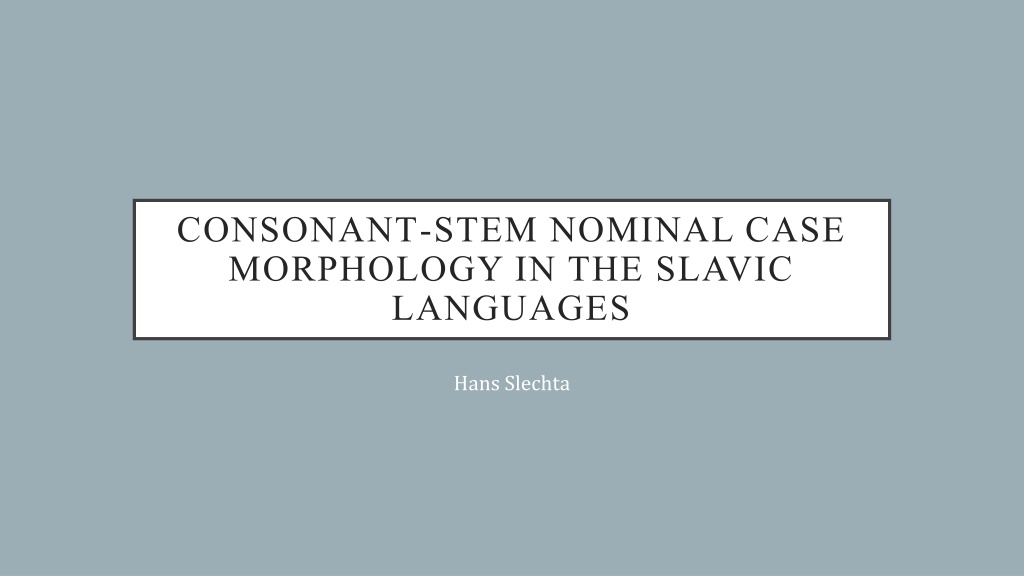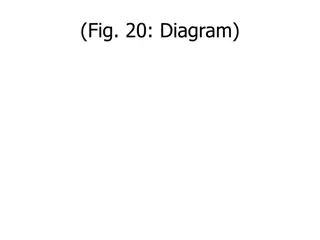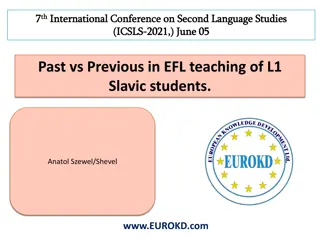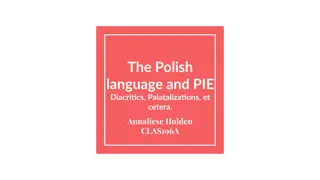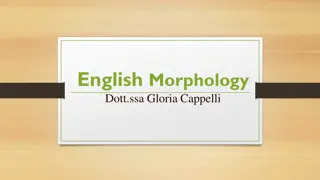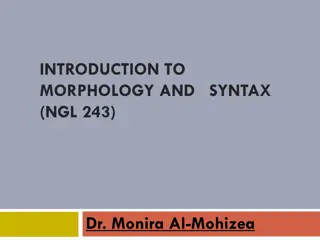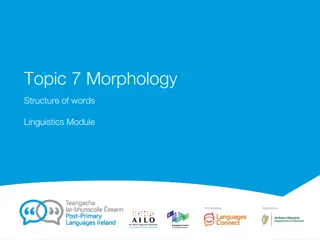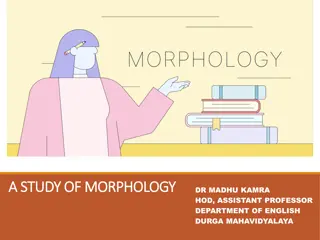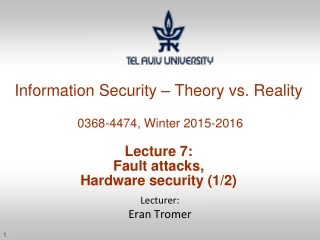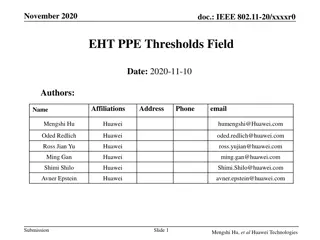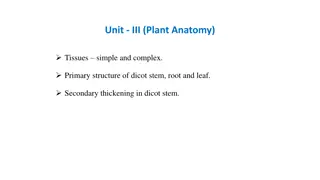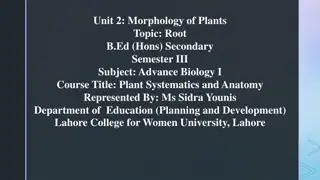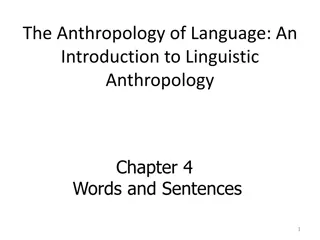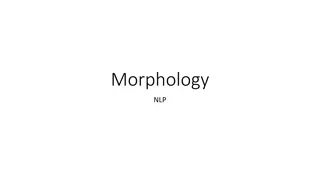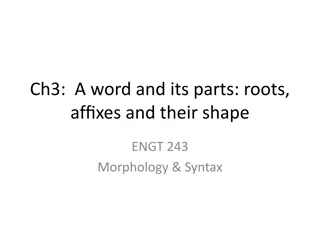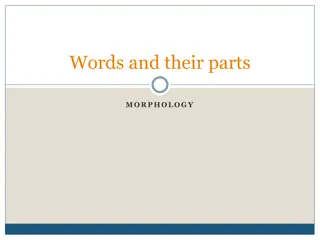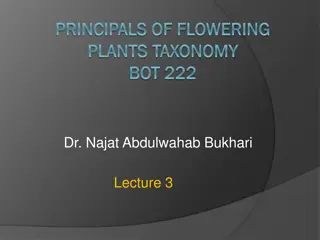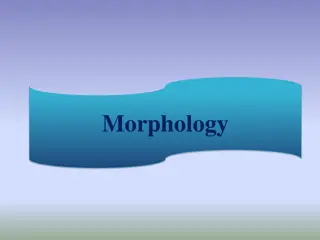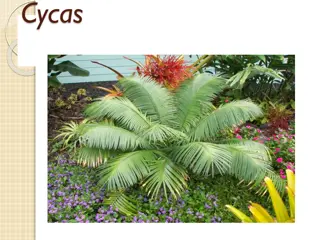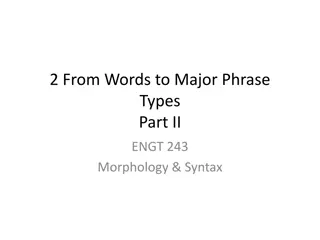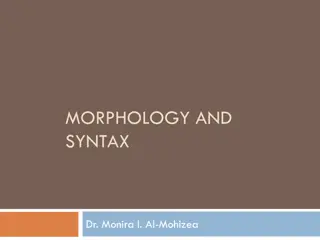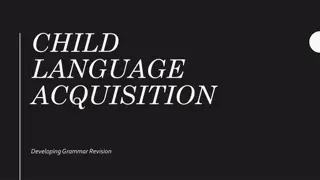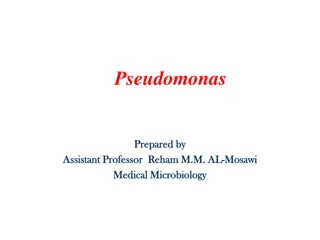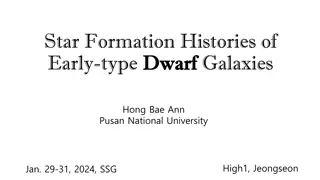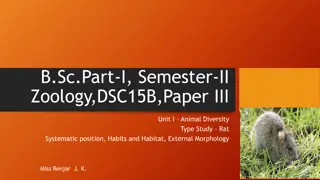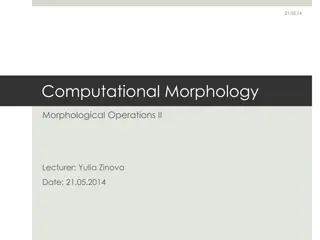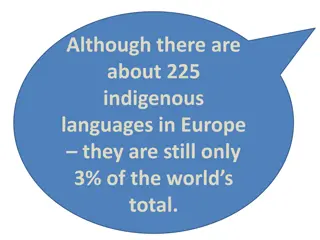Understanding Slavic Nominal Case Morphology & Stems
Uncover the intricacies of consonant-stem nominal case morphology in Slavic languages, from the introduction to the case system to the classification of consonant stems into major groups such as *u-stems, *n-stems, *s-stems, *nt-stems, and *r-stems. Explore the unique characteristics of *-stems, *o-stems, as well as N-stems for neuter and masculine forms. Delve into Proto-Slavic roots and discover the evolution and usage of these essential linguistic elements through detailed visuals and explanations.
Uploaded on Sep 27, 2024 | 0 Views
Download Presentation

Please find below an Image/Link to download the presentation.
The content on the website is provided AS IS for your information and personal use only. It may not be sold, licensed, or shared on other websites without obtaining consent from the author. Download presentation by click this link. If you encounter any issues during the download, it is possible that the publisher has removed the file from their server.
E N D
Presentation Transcript
CONSONANT-STEM NOMINAL CASE MORPHOLOGY IN THE SLAVIC LANGUAGES Hans Slechta
INTRODUCTION TO THE SLAVIC CASE SYSTEM PIE had eight grammatical cases (Ablative merged with Slavic Genitive) Proto-Slavic retains seven (Nominative, Genitive, Dative, Accusative, Instrumental, Locative, Vocative) Nominative Subject Genitive Possession Dative Indirect Object Accusative Direct Object Instrumental Use of a Tool/Instrument Locative Location Vocative Address
INTRODUCTION TO CONSONANT- STEMS PIE nouns could be thematic or athematic Thematic e/o immediately before case endings Athematic consonant immediately before case endings Thematic/Athematic case endings were essentially the same In Proto-Slavic, former PIE stem-suffixes merge with the case endings, creating vowel-stems (*i , *u , *a , and *u ), and thematic nouns all become interpreted as *o-stems All other nouns become consonant-stems the inherited form had a consonant immediately before the case ending
CONSONANT-STEMS (5 MAJOR GROUPS) *u -stems count as consonant-stems development of -uv- stem in oblique cases, duals, and plurals *n-stems *s-stems *nt-stems *r-stems
*-STEMS *o ty duck Church Slavonic: o ty Old Russian: utica/utovi /uty, G. utu ve Russian: u tka/u tica/utva (coll) Ukrainian: u tyc a Belarusian: uc /u c ica Lower Sorbian: hus ica duck /hus e, G. hus es a young duck Serbo-Croatian: u tva Slovene: tva
*N-STEMS (NEUTER) *se lme beam Russian Church Slavonic: sle me , G. sle mene Russian: slemja, G. slemene beam, cross-beam Czech: sle me /slemeno beam, ridge Slovak: slema /slemeno Polish: s lemie /szlemie Bulgarian: sle me Serbo-Croatian: s lje me, G. s lje mena roof-beam Slovene: sle m e, G. sle m ena ridge beam
*N-STEMS (MASCULINE) *strumy stream, brook Russian: stru men Ukrainian: stru min , G. stru menju/strumo k, G. strumka Old Czech: strumen Czech: strumen Polish: strumien /strumyk Upper Sorbian: trum en Lower Sorbian: ts um en Polabian: stra umen Slovene: stru men, G. strume n a
*S-STEMS *te lo body OCS: te lo, G. te lese Old Russian: te lo, G. te lese Russian: te lo Ukrainian: ti lo Czech: te lo Slovak: telo Polish: cia o Upper Sorbian: c e o Lower Sorbian: s e o Bulgarian: te lo Serbo-Croatian: ti jelo Slovene: te l , G. te le sa
*NT-STEMS *z e rbe foal, young donkey Polish: z rebie OCS: z re be Upper Sorbian: z rebjo Russian: z erebjo nok Lower Sorbian: z r eb e Ukrainian: z erebja Polabian: zriba Belarusian: z e rebe Bulgarian: z rebe Czech: hr i be Serbo-Croatian: z dri jebe Slovak: z rieba Slovene: z rebe , G. z rebe ta
*R-STEMS *du kti daughter Polish: cora/co rka OCS: du s ti, G. du s tere Slovincian: co rka Old Russian: doc i Bulgarian: du s ter a Russian: doc /do c i (dial), G. do c eri Macedonian: kjerka Ukrainian: doc , G. do c ery Serbo-Croatian: kc i , G. kc e re; s c i , G. s c e ra Belarusian: dac ka C akavian: c e r, G. c e ri/c ere ; hc i , G. hc e ri/hc ere /hc eri Old Czech: dci, G. dcer e Slovene: hc i , G. hc re; hc r, G. hc eri Czech: dcera Slovak: dce ra
SOURCES Derksen 2008: Etymological Dictionary of the Slavic Inherited Lexicon Olander 2015: Proto-Slavic Inflectional Morphology Trubachev, et. al. 1974-2004: Etymological Dictionary of the Slavic Languages Vasmer 1953-1958: Russian Etymological Dictionary
